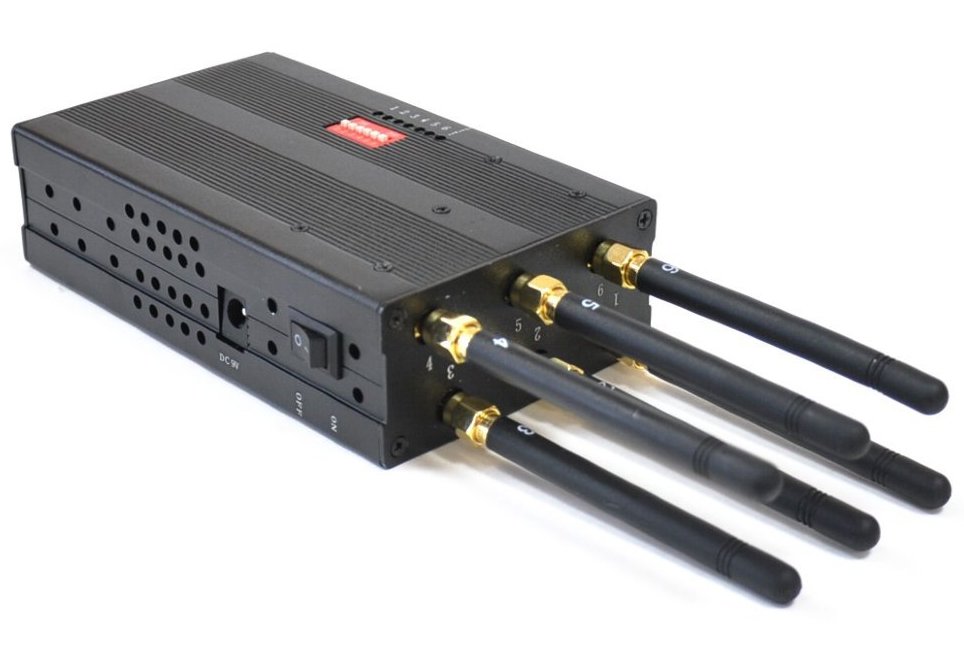Ranking the best mandolins for 2022

Italian melodies, lush baroque, romantic atmosphere of Italy are the first associations that arise when you hear the word "mandolin". This stringed musical instrument, resembling a half pear in shape, is a subspecies of the lute, which became its prototype. However, compared to the lute, the mandolin has fewer strings and its neck is shorter in length. As for the musical application, it is quite wide and varied: it is used not only in the performance of Italian folk music, but also in other musical movements and styles, from the Renaissance to country, folk and rock.
Despite the unusualness of the instrument and its specific sound, attention to the mandolin does not decrease, and today you can find its ancient and modern varieties.
Content [Hide]
Mandolin device
Its body is usually made of wood and has a teardrop shape. The ribs of the instrument are also made from hardwoods such as rosewood, maple, cherry or ebony. Decks are made of spruce or cedar. The classic Neapolitan mandolin has a flat upper soundboard with a slight kink, the lower soundboard is convex. This shape of the body provides a strong and soft sound, compared to instruments with a Portuguese body shape, which give a sharper sound.
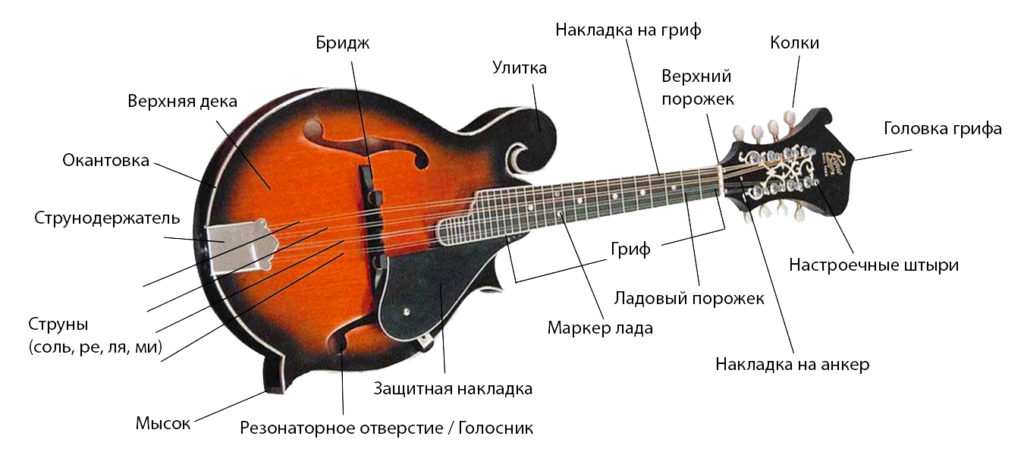
The neck holds 10 ivory or metal frets and is made of larch, maple, rosewood cedar and other woods. The part of the neck that is on the deck holds the extra frets. The head with slots for the pegs is flat, made of metal (in the old days it was made of bone or hardwood and fastened with nails).
Nut, stand are also made of durable wood or ivory. The stand can be moved, it is not fixed, which allows you to fine-tune the scale. The tailpiece can be made of metal, wood or bone. As for the number of strings, it differs depending on the type of instrument. The strings are made of steel, the winding can be bronze, copper, brass, nickel or silver. The thickness of the strings is 009p-012p-021w-036w, 010p-014p-024w-038w or 011p-015p-026w-040w, ("p" - unwound strings, "w" - with winding).
Origin story
The emergence of this musical instrument can be traced back to approximately the 14th century, when the first mandola (a kind of lute) appeared in Europe.In European countries, it had different names, the parameters of the instrument also differed slightly.
The first mention of a mandolin with steel strings (a Genoese variety, in many respects similar to modern designs) is found in the works of famous Italian musicians who, traveling through the cities of Europe, taught music, playing various musical instruments. Based on information extracted from old records, it has been suggested that the classic mandolin that has come to our day originated in Naples and was invented by the Vinacia family. Today, its first models are in the museums of Brussels, USA, London, the earliest example dates back to 1744.
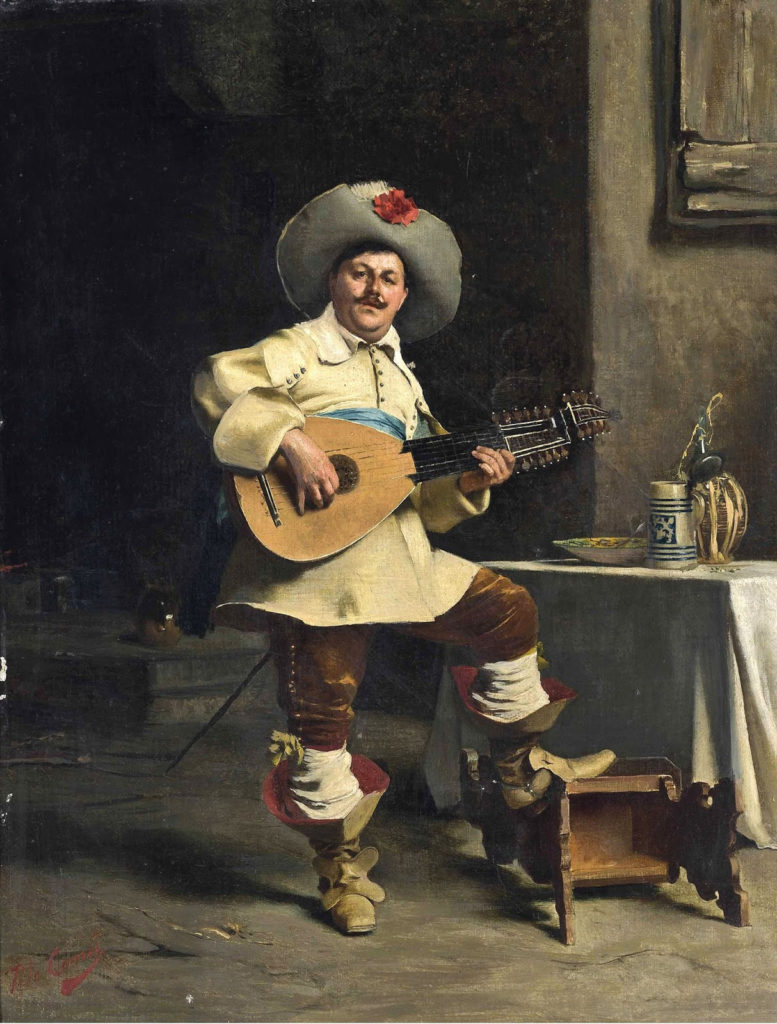
On modern mandolins, you can play in a group, ensemble, accompany or perform solo compositions of various musical directions. In Russia, the mandolin was highly popular in the tsarist pre-revolutionary era, during the Soviet era and today. Music performed on the mandolin can be heard in many films of the Soviet era, and it is mentioned in Russian literature. The art of playing this musical instrument is mastered by Vladimir Kholstinin, one of the frontmen of the famous rock band Aria.
The mandolin is very popular in the directions of folk rock and even metal - it can be heard in the compositions of such legendary bands and performers as Metallica, Led Zeppelin, Nightwish, The Doors, In Extremo, Jethro Tull and other famous bands.
Dave Apollon, an American musician of Russian origin, has recorded many mandolin pieces and is considered the greatest mandolinist of the 20th century.
Varieties
In the modern world, the most popular and sought-after type of mandolin is the Neapolitan, however, other types of this musical instrument are also widely used in various areas of music. For example, in the United States, bluegrass is the most common variation.
As for the main directions, there are two of them:
- academic tradition. This is where such subspecies of the instrument as bouzouki (Celtic music) and bandolina (Brazilian version) originated.
- Country. This includes the classic mandolin with A-style and F-style shapes (a separate type of instrument that is widely used and in high demand).
Instruments of the A-style variety are oval or tear-shaped in shape, the back and top are usually carved with arched elements, like a violin. Also, the A-style instrument has a flat back, giving it a slight resemblance to a guitar. This type is most popular among those who play folk music, Celtic motifs, as well as classical music.
The F-style, or Florentine variety, is distinguished by the presence of protrusions on the bottom of the soundboard, thanks to which the seated musician can comfortably hold the instrument. This type is popular with bluegrass and country performers; also, on the basis of the Florentine mandolin, other varieties of the instrument were created, which have separate distinctive elements, differing in the shape of the body, the number of strings.
Today there are the following types:
- Neapolitan. Its body has an almond-shaped, strongly curved shape, it is made of wood. The instrument has 4 double strings, which are tuned similarly to violin strings.
- Milanskaya. The main difference between this variety is the number of strings - five double strings are put on the Milanese variation.
- Portuguese. The body of this type of tool has an almost flat shape with a shell. The decks are also almost flat. The Portuguese variety also comes with ffs located on the top soundboard and a resonator hole.
- Mandriola. Its other name is trichordia, or Sicilian mandolin. This is a variation with four triplet strings. The most widespread mandriol received in Mexican music.
- Mandala. This modification, which is the ancestor of the modern instrument, has several names - mandora, bandurina, tenor-mandola, pandurin. The mandala scale is 420 mm, as for the tuning, it is a fifth lower than usual.
- Octave. Its tuning is one octave lower than usual, but otherwise corresponds to the standard G-D-A-E. The scale of the octave mandolin is 500-584 mm, which corresponds to 20-23 inches.
- Mandocello. This modification differs from other varieties in size and scale, which brings the mandocello closer to the guitar. The tuning is like a mandola, C-G-D-A, and the scale is 635-686 mm (25-27 inches).
- Laouto. This is a variation of the mandocello with the same action, but the scale here is 712 mm (28 inches). Laouto was most popular in Greece.
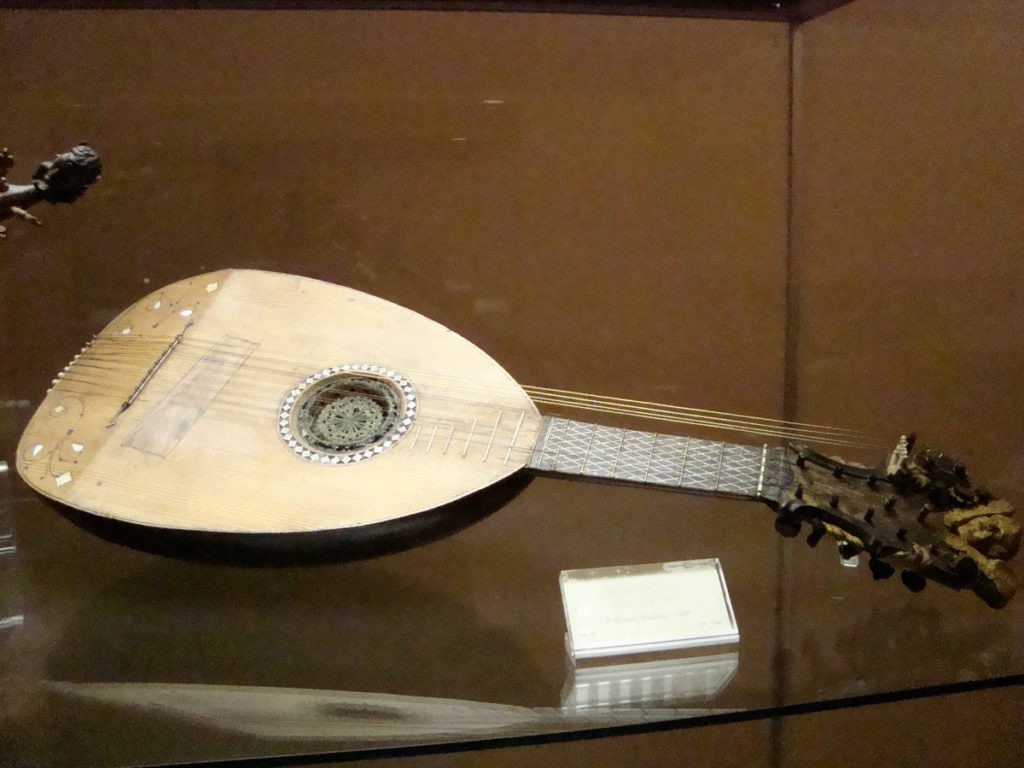
- Mando bass. The prototype of this type is the double bass. Here, the classical size of the scale is similar to the double bass (1,100 mm, which is 43 inches). The mando bass can be four-string, with an E-A-D-G tuning, and also, like a mandolin, eight-string with four pairs of strings and similar fingering. In the latter version, the mando bass is tuned two octaves lower (G-D-A-E or C-G-D-A tuning).
- Sopranino-mandolin. Its other name is the small mandolin.This variety is less common than the previous ones, the scale here is 240 mm (9.5 inches), and its system is C-G-D-A.
- Irish bouzouki. Or a short version of the name - "zouk". This modification has the classic four double strings tuned in pairs. The scale length of the Irish bouzouki is 530-610 mm (21-24 inches), G-D-A-E or G-D-A-D.
- Cistra. Despite the extra pair of strings, the cistra sounds like an octave mandolin, has a D-G-D-A-D or G-D-A-D-A tuning, five double strings, and the scale size is 500-550 mm (20-22 inches).
Overview of the most popular mandolin models
Kentucky KM-150
votes 3
A-style mandolin. The top is made from solid resonant spruce, while the back and sides are made from solid maple. The case has a sunburst lacquer finish, the edges are trimmed with ivory plastic tape. The protective cover is made of black plastic. Efas and anchors are traditional. The neck is set, the neck is made of solid maple, the fretboard is Indian rosewood. The string length is 354 mm. The Kentucky KM-150 has 21 frets (12 of which are on the fretboard), with mother-of-pearl dots at frets 3,5,7,10, 12,15. The logo on the headstock is also made of mother-of-pearl.
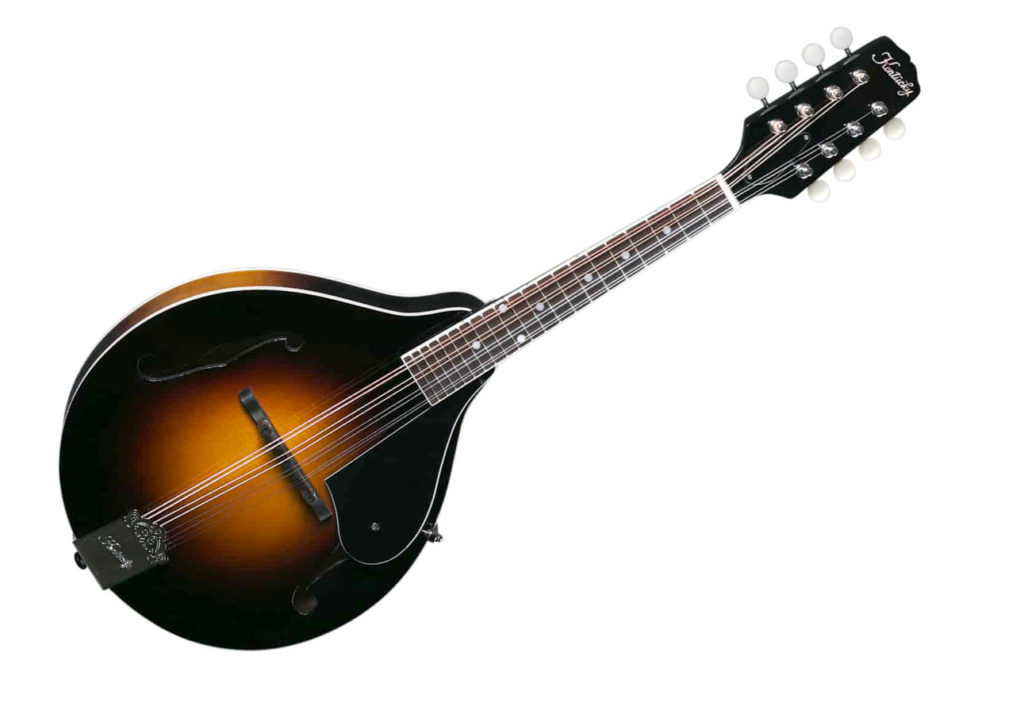
The nut is made of bone, its width is 29 mm. The saddle is made of rosewood and equipped with adjustment wheels. The brass neck is stylized in the 20s. The handles of the “deluxe” tuning pegs are plastic, white, the number of pegs is 8 (4 on each side).
The country of the manufacturer of the model is the USA. The average cost is - 28,500 rubles.
- Soft sound;
- Smooth sound.
- The floating bridge is difficult to set up.
Ibanez M510E-BS
votes 1
The A-style electric mandolin is part of Ibanez's Limited Mandolin. Available in a glossy Brown Sunburst finish. The M510E-BS has a spruce top, mahogany back, maple neck. All accessories of the tool are chrome-plated. Bridge and fingerboards are made of rosewood. Strings are standard.
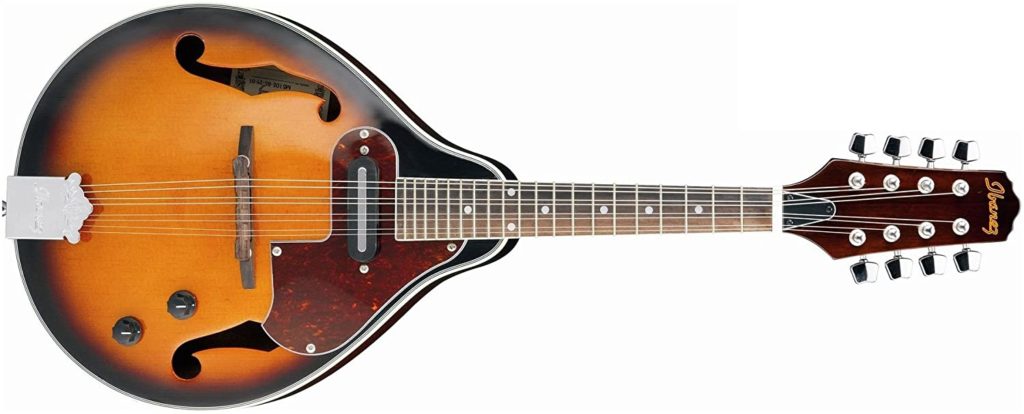
The Ibanez M510E-BS is equipped with a magnetic single-coil pickup with volume and tone knobs to adjust the sound.
The average cost is - 12,454 rubles.
- Convenience in the game;
- Great sound.
- Not found.
Eastman MD 315
votes 1
Bluegrass mandolin with F-Style shape. The body is made from solid spruce, while the back, sides and neck are maple. The instrument has a satin lacquered finish.
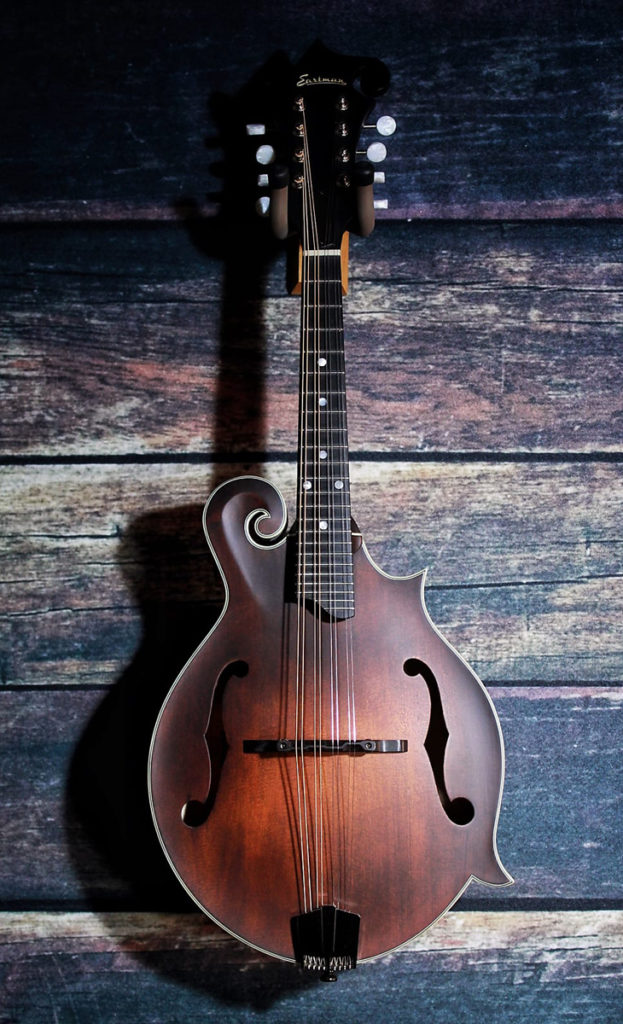
The fretboard is made of rosewood (rosewood). Elements of mechanics are chrome-plated. The number of strings is 8, the tuning is G-D-A-E.
The average cost of "Eastman MD 315" is 64,808 rubles.
- The sound is suitable for playing in various styles;
- Users note the excellent quality-price ratio.
- No.
Stagg M 50E BLK
votes 1
Black electroacoustic mandolin. The top, pegs and neck are made of Nato wood (Nato Wood is a relative of mahogany), the fretboard is made of rosewood. The adjustable bridge is made from black lacquered maple wood.
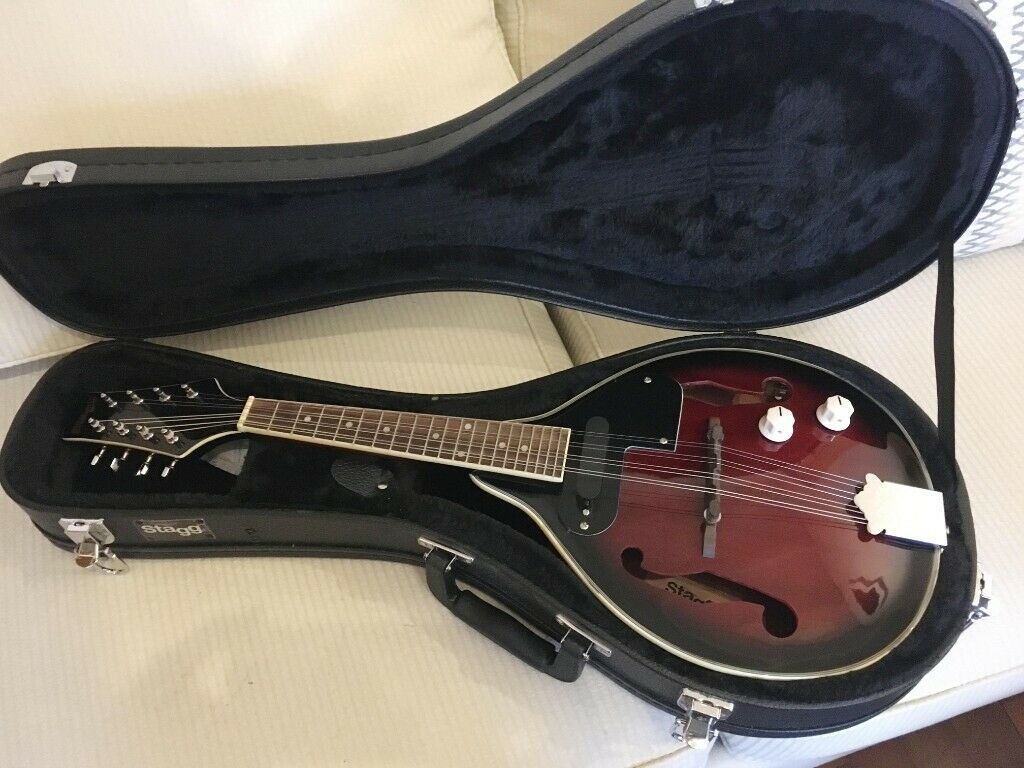
The number of frets is 20 frets. String holder and tuning pegs are nickel-plated. The Stagg M 50E BLK has 2 F-holes, is equipped with a single-coil pickup and 1V/1T controls.
The average cost of "Stagg M 50E BLK" is 12,547 rubles.
- Budget option, suitable for training;
- Ideal for solo.
- Difficulty in setting up an adjustable bridge.
Hora M1088
votes 1
Tenor mandala model featuring a flat bottom and equipped with four pairs of twin strings. The body of Hora M1088 is made of solid maple, the top deck is made of Carpathian spruce wood. Nickel-plated neck, bridge, neck are also made of maple.
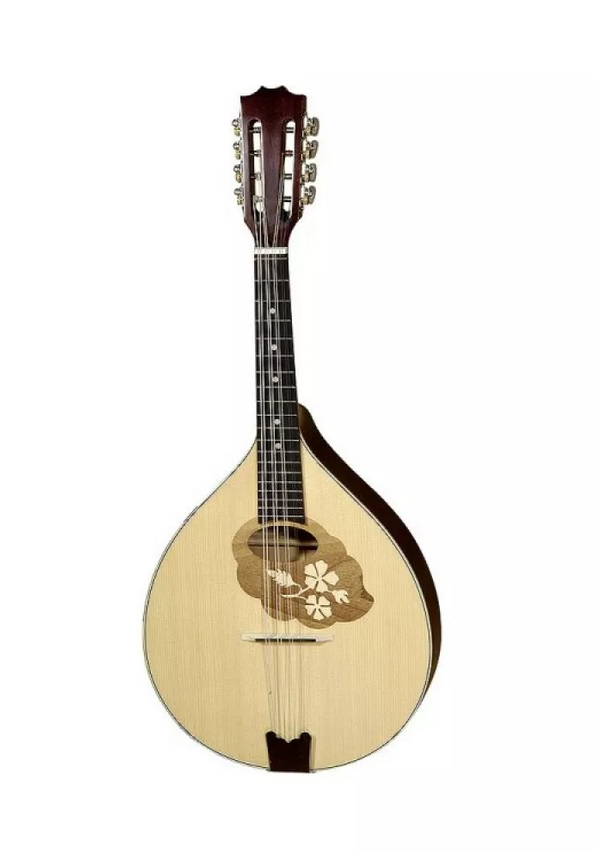
The scale size is 402 mm, the total number of strings is 8 (four on each side), the number of frets is 19. The fretboard is made of ebony, the pegs are cast, gilded.
The average cost of "Hora M1088" is 12,573 rubles.
- The price allows you to purchase it for beginner musicians;
- The quality is excellent for the price.
- Nothing significant for this price.
Washburn M1K
votes 0
The American company Washburn has been manufacturing musical instruments since the 19th century. The products of this company are distinguished by full-fledged, clear sound, high build quality and affordable cost. The Washburn M1K is suitable for both experienced musicians and those who are just getting started with this instrument.
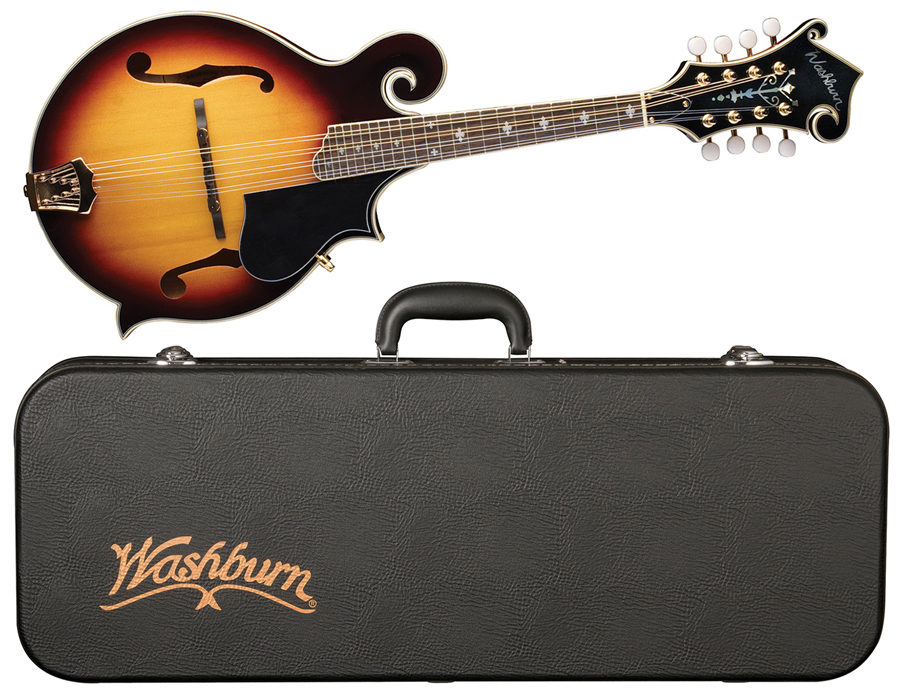
American style A-Style mandolin in sunburst. The top is made of spruce, the back and sides are solid maple, and the fretboard and bridge are rosewood (rosewood). Pegs and accessories "Washburn M1K" chrome-plated. The scale length is 330 mm (13 3/4 inches), the number of frets is 20, the number of strings is 8, and the nut width is 1.13 inches. The Washburn M1K comes with a storage and carrying case, picks, a tuning fork, a strap and a booklet with full information about the model.
The average cost is - 10,214 rubles.
- Good starter kit
- Excellent sound quality.
- Not identified.
How to learn to play the mandolin
This ancient instrument can be played standing up, using a special belt to reduce the load, or sitting, throwing one leg over the other to rest the instrument.
When playing with the left hand, a technique reminiscent of a guitar is used: the fingerboard must be clasped with the thumb, placing the remaining fingers under the strings, pressing against the frets in the necessary places.
When performing a fast passage, do not keep your fingers high above the strings. You can play on individual strings, as well as chords.
When playing with the right hand, fingers are rarely used, usually a plectrum is used, which must be clamped with the thumb and forefinger of the right hand, while other fingers do not participate in the game. The hand should be placed on the body, and the forearm should be slightly higher than the tailpiece.
The best place for sound production is at the resonator hole, in the same case, if it is replaced by ffs - near the lower end of the fretboard. By moving the pick towards the stand, you can extract sharp sounds, and closer to the neck, on the contrary, the sound softens.
The main technique of playing the mandolin is tremolo - this is the extraction of a fast repetitive sound. Mandolin strings tend to make short, quickly decaying sounds, so tremolo is played in order to prolong the sound.
The mandolin uses many different techniques that are applicable to plucked string instruments:
- vibrato;
- glissando;
- slip;
- pizzicato;
- flageolets;
- grace notes;
- guitar pools, hammers, arpeggios and others.
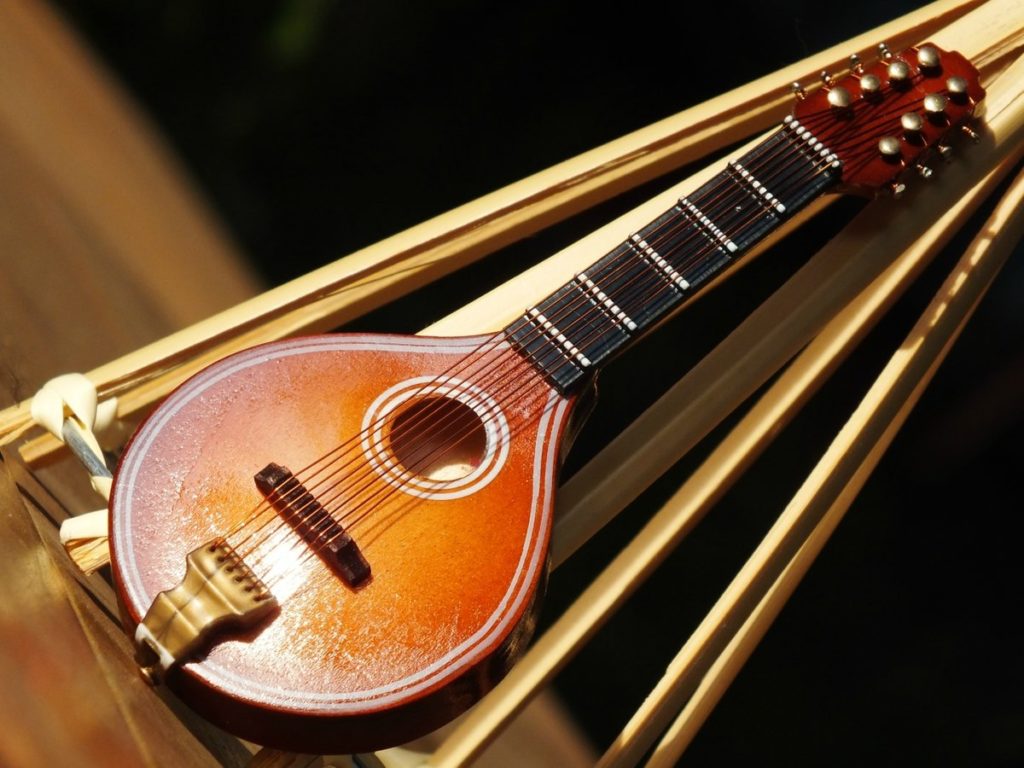
The Italian mandolin remains popular today, finding its implementation in many modern musical directions and styles. The technical capabilities of the 21st century - sound technology, electro-acoustics and others - allow you to unleash the potential of the instrument in such genres of music as rock, metal, folk-rock, giving the composition a special sound with romantic or exotic notes.
new entries
Categories
Useful
Popular Articles
-

Top ranking of the best and cheapest scooters up to 50cc in 2022
Views: 131650 -

Rating of the best soundproofing materials for an apartment in 2022
Views: 127688 -

Rating of cheap analogues of expensive medicines for flu and colds for 2022
Views: 124517 -

The best men's sneakers in 2022
Views: 124031 -

The Best Complex Vitamins in 2022
Views: 121938 -

Top ranking of the best smartwatches 2022 - price-quality ratio
Views: 114978 -

The best paint for gray hair - top rating 2022
Views: 113393 -

Ranking of the best wood paints for interior work in 2022
Views: 110318 -

Rating of the best spinning reels in 2022
Views: 105327 -

Ranking of the best sex dolls for men for 2022
Views: 104363 -

Ranking of the best action cameras from China in 2022
Views: 102215 -

The most effective calcium preparations for adults and children in 2022
Views: 102010
